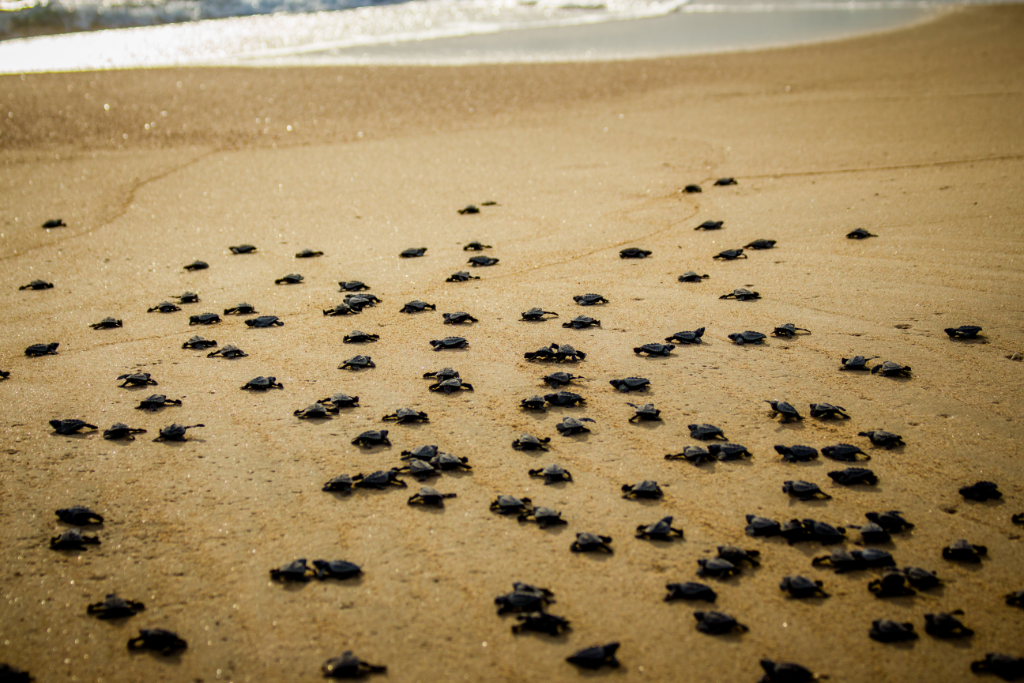The spring and summer seasons on Naples, Florida beaches host a very special natural event that centers around the Loggerhead turtle nesting. Every year, some of these protected species return to the place of their birth to lay the eggs of their young. The females have nesting sites located on the shores of the Mediterranean Sea as well as the Florida coast.
Interesting Loggerhead Turtles Facts
- The Loggerhead Turtle can grow up to four feet long and weigh up to 440 pounds or more. The heaviest recorded weighed nearly 1000 pounds.
- The lifespan can reach to over 60 years with the reproductive stage being 17-33 years.
- The Loggerhead name is derived from its large head and powerful laws needed for food.
- These turtles feed on various bottom-dwelling marine life that includes sea urchins, shellfish, living coral, jellyfish, squid and octopus.
- These are a marine turtle species that live at sea, with only the females coming to shore to nest.
- They nest every two to three years, leaving 3-4 clutches of eggs in several month periods of time.
Loggerhead Challenges
The adult loggerhead turtle has few natural enemies. Seals, sharks, and killer whales pose predatory challenges, but the greatest is humans. Facing the largest unnatural challenge is pollution along with the fishing industry nets. Turtle babies face many natural enemies on their beach trek back to the ocean and in the water. Even the eggs in the nest are vulnerable to being eaten or disturbed. Often predators gather when the eggs begin to hatch ready to pick off the new hatchlings as they find their way down the sand to the water. Hatchlings often emerge at night, using the moonlight reflecting on the water as a guide to go in the correct direction.
Guidelines For Naples Beach Observation Of Turtle Nesting
If you are lucky enough to observe a nesting turtle, there are some rules that you should follow.
- Observe from a distance. Do not get close or approach the turtle.
- Remain quiet. Loud noises can frighten the turtle as well as disrupt the nesting and egg laying process.
- They can lay over a hundred eggs in a single clutch, so allow them the time it takes without disruption.
- Do not use lights when observing as this will disturb the turtles.
- Sudden aggressive movements will frighten the turtle, so pick a spot to observe and settle in. Move slowly away from the turtle if you decide to leave.
- You may see cages on the beach over the nests to help protect the eggs. Do not touch or move the cages.
- If you see litter in the nesting area, please remove it to help ensure the turtle’s safety.
- Please report an injured turtle to the local conservancy.
- Remember, these turtles are protected by local and federal law.
What an exciting adventure awaits when it is turtle nesting time for the Loggerheads. Observing their trails on the beach, lets you know they have arrived. It only takes a couple of months for the eggs to hatch. Then begins the mad scramble of baby turtles finding their way to their new watery home.

